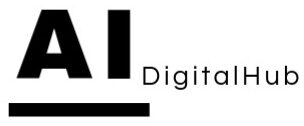In 2025, AI image generators have become essential tools for creators across all industries. From graphic designers and marketers to artists and content creators, these powerful tools allow you to craft stunning visuals quickly and efficiently—no professional skills required. Whether you’re looking to generate photorealistic images, conceptual art, or unique graphics, AI has made it easier than ever to transform your ideas into reality.
With so many AI image generators available, it can be tough to choose the right one for your needs. To help, we’ve compiled a list of the top AI image generators that stand out for their unique features, customization options, and ease of use. Read on to discover which tools can take your creative projects to the next level and how AI is taking over the digital market.
1. MidJourney: Best for Artistic Results

If you’re looking to generate artistic and highly creative images, Midjourney is the go-to tool. It’s known for producing stunning, surreal, and abstract images that push the boundaries of conventional art. With its advanced AI, Midjourney allows you to experiment with different styles, textures, and compositions to create truly unique visuals.
MidJourney is ideal for digital artists, designers, and anyone who wants to generate innovative and imaginative art that stands out.
Pros:
-
Great for surreal and abstract art
-
Highly creative and imaginative visuals
-
User-friendly for artistic exploration
Cons:
-
Not ideal for highly realistic images
-
Requires some time to master the style options
2. GPT-4o: Best for Integrating AI Images into Your Workflow

For those who need AI image generators that fit seamlessly into their content workflow, GPT-4o is an excellent choice. This tool integrates image creation with written content, allowing creators to generate visuals that complement their blog posts, articles, and social media updates. GPT-4o’s capabilities make it easier for content creators to enhance their work by adding custom-generated images based on text descriptions and adopting the top tech trends.
This tool is perfect for bloggers, marketers, and social media managers who need quick and relevant images for their written content.
Pros:
-
Seamless integration with text-based workflows
-
Efficient and fast image generation
-
Easy to use with text prompts
Cons:
-
Limited customization options for advanced users
-
Best suited for simpler image generation needs
3. Reve: Best for Overall Prompt Adherence

If accuracy and adhering to prompts are essential for your projects, Reve is a strong contender. This AI image generator excels at following detailed instructions and creating images that closely match the description provided. If you need to ensure that your visuals align with specific requirements, Reve can deliver high-quality results based on your text input.
Reve is ideal for product design, illustrations, or when you need highly accurate visual representations.
Pros:
-
Excellent prompt adherence
-
Great for creating detailed, specific images
-
High accuracy and precision
Cons:
-
Limited creative freedom compared to other tools
-
Not ideal for artistic or abstract visuals
4. Ideogram: Best for Accurate Text-to-Image Generation

For those focused on generating images directly from text with high accuracy, Ideogram stands out. This AI tool is designed to take text prompts and turn them into high-quality visuals that align perfectly with the description. Whether you’re creating images for marketing, educational content, or social media, Ideogram offers precise results.
It’s ideal for businesses and creators who need to create images that match exact specifications.
Pros:
-
Highly accurate text-to-image generation
-
Ideal for marketing and educational content
-
Simple and easy-to-use platform
Cons:
-
Not as suitable for abstract or artistic work
-
Limited customization for advanced users
5. Stable Diffusion: Best for Customization and Control

If you want full control over your AI-generated images, Stable Diffusion is the tool to go for. Known for its high level of customization, this platform allows users to adjust nearly every aspect of the image generation process. From color palettes to intricate details, Stable Diffusion gives creators the ability to fine-tune their visuals to meet specific requirements.
It’s perfect for advanced users who want to explore different styles and tweak their creations for maximum impact.
Pros:
-
Extensive customization options
-
Great for professionals and advanced users
-
Open-source, allowing for code modifications
Cons:
-
Can be overwhelming for beginners
-
Requires more technical know-how to use effectively
6. FLUX.1: Best Stable Diffusion Alternative

If you’re looking for a simpler alternative to Stable Diffusion without sacrificing too much control, FLUX.1 offers a more user-friendly experience. This AI image generator provides many of the same capabilities as Stable Diffusion but with a more intuitive interface. It’s a great option for users who want customization without the steep learning curve.
FLUX.1 is perfect for intermediate users who want to generate high-quality images but need an easier setup than Stable Diffusion.
Pros:
-
User-friendly and accessible
-
Offers customization similar to Stable Diffusion
-
Great for intermediate users
Cons:
-
Less powerful than Stable Diffusion for advanced users
-
Some features may feel limited compared to the more complex platforms
7. Adobe Firefly: Best for Integrating AI-Generated Images into Photos

For those who work with photos and want to integrate AI-generated images, Adobe Firefly is the ideal choice. Adobe’s AI tool makes it easy to combine AI-generated art with your existing images. Whether you’re a photographer, designer, or content creator, Adobe Firefly allows you to enhance your work by adding AI-created elements directly into your photos.
It’s a powerful tool for anyone looking to elevate their photography or digital artwork with AI-generated visuals.
Pros:
-
Seamless integration with Adobe Creative Cloud
-
Great for enhancing photography and graphic design
-
Ideal for combining AI images with existing visuals
Cons:
-
Requires a Creative Cloud subscription
-
Not as focused on pure art generation
8. Recraft: Best for Graphic Design

Recraft is an AI image generator tailored specifically for graphic designers. It’s built to create logos, branding materials, and other graphic assets. If you’re a designer looking for AI tools to speed up your creative process or experiment with new design ideas, Recraft is a great choice. Its intuitive platform makes it easy to generate professional-quality graphics.
Perfect for branding, marketing, and design professionals, Recraft delivers high-quality visuals with ease.
Pros:
-
Designed for graphic design and branding
-
Easy-to-use interface
-
Ideal for logos and marketing materials
Cons:
-
Not suitable for artistic or abstract visuals
-
Limited flexibility for more complex art generation
Conclusion: Which AI Image Generator Should You Choose?
The world of AI image generation offers tools that cater to every need, from artistic exploration to precise text-to-image creation. Whether you’re a marketer looking to add AI-generated visuals to your content or an artist seeking new ways to bring your ideas to life, there’s an AI tool for you. MidJourney, Stable Diffusion, and Adobe Firefly are great options for specific use cases, while Reve and Ideogram excel at prompt accuracy and adherence.
With so many choices available, it’s all about finding the right fit for your creative needs in 2025. So, which AI image generator will you try first?


